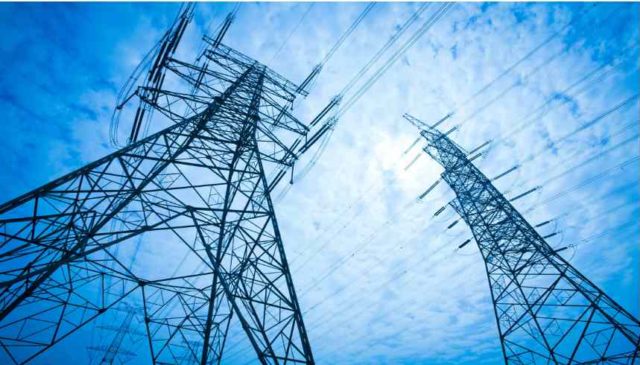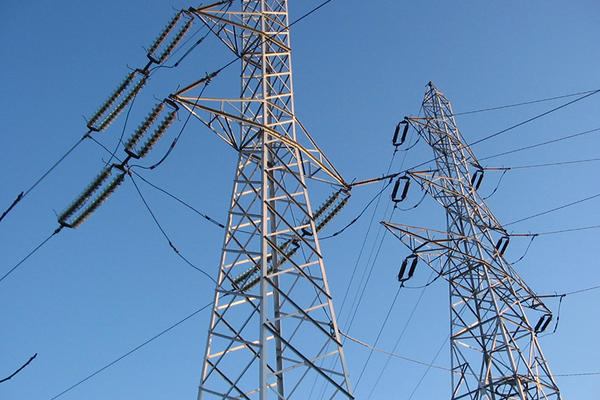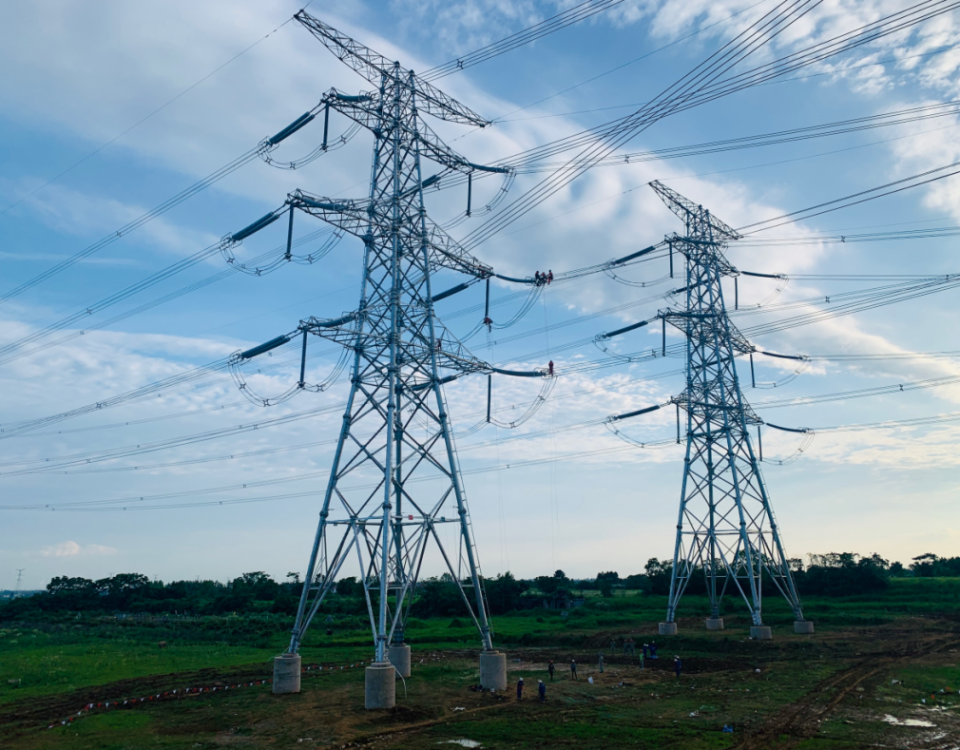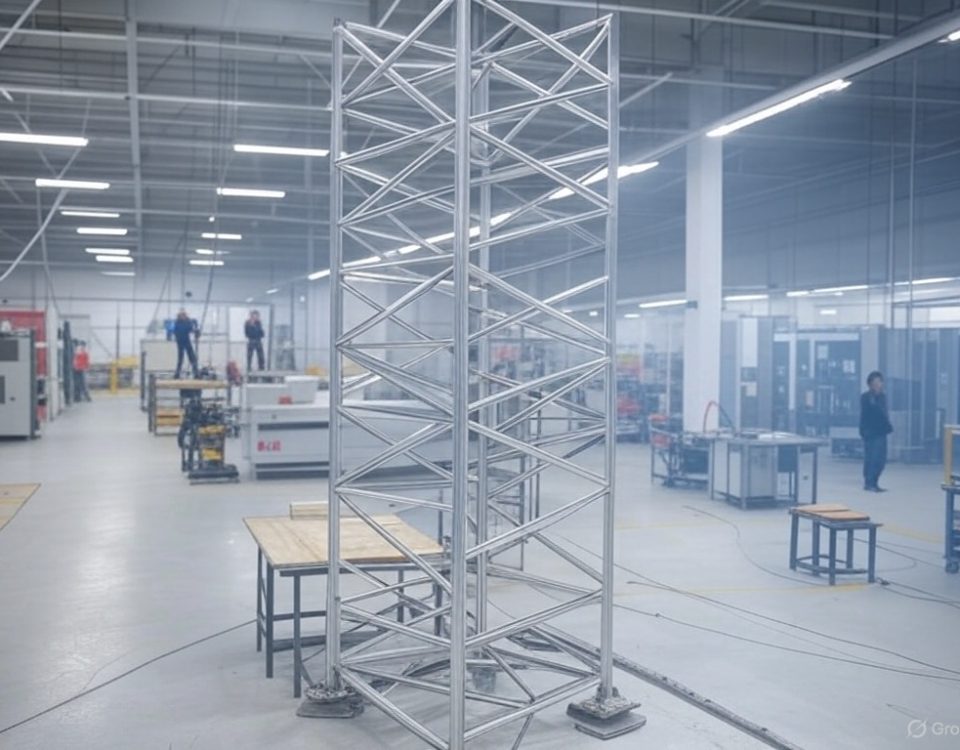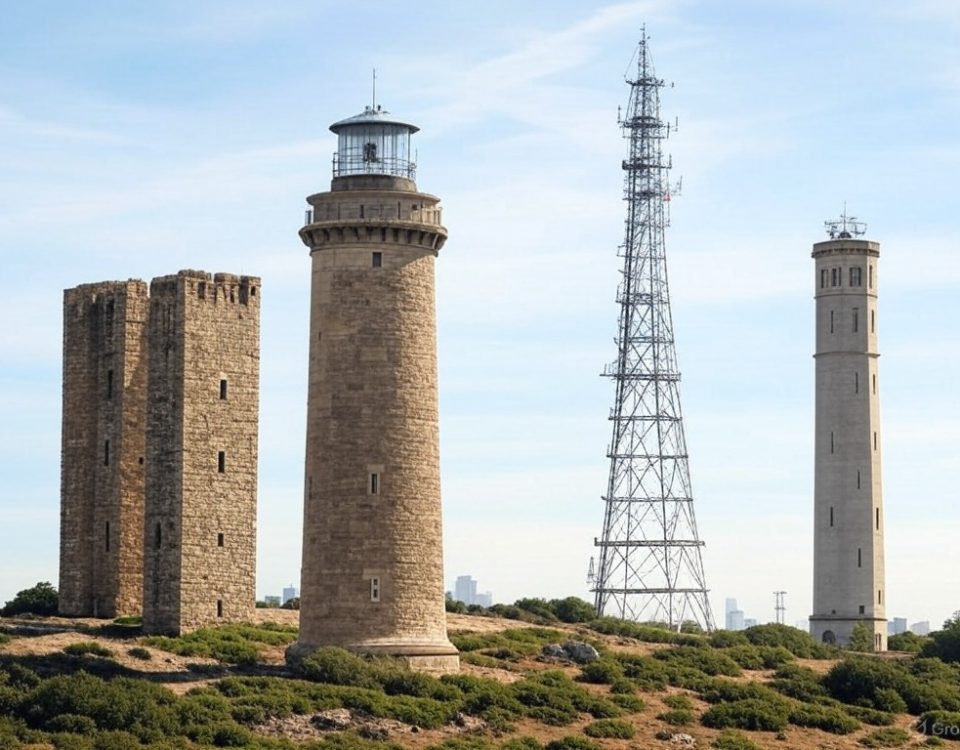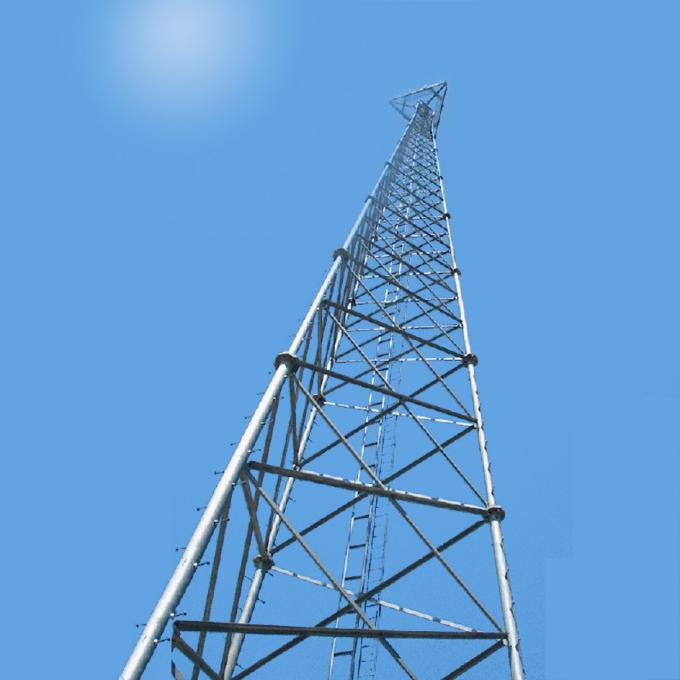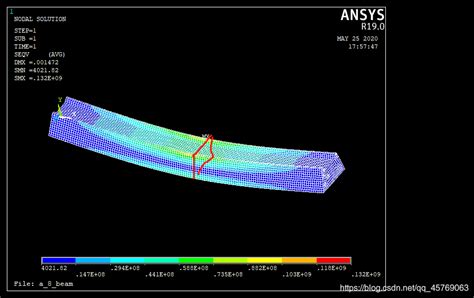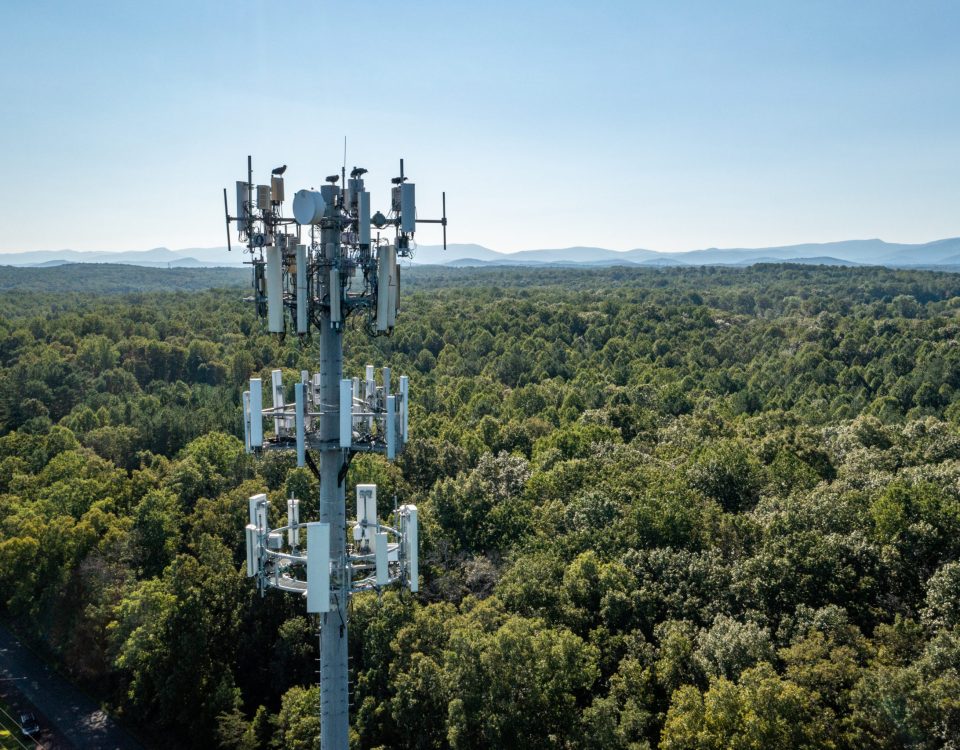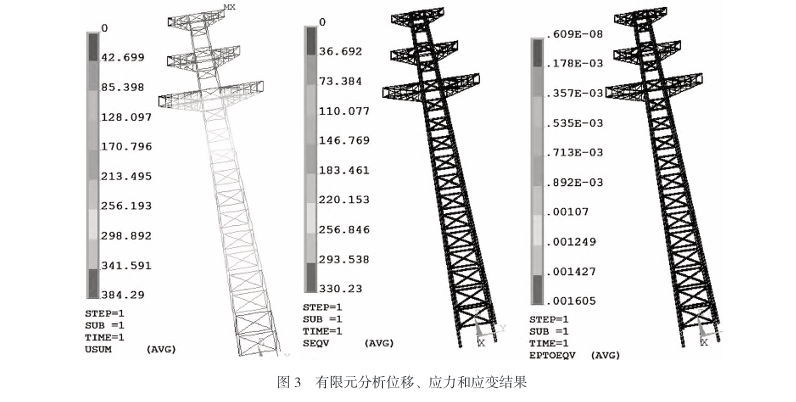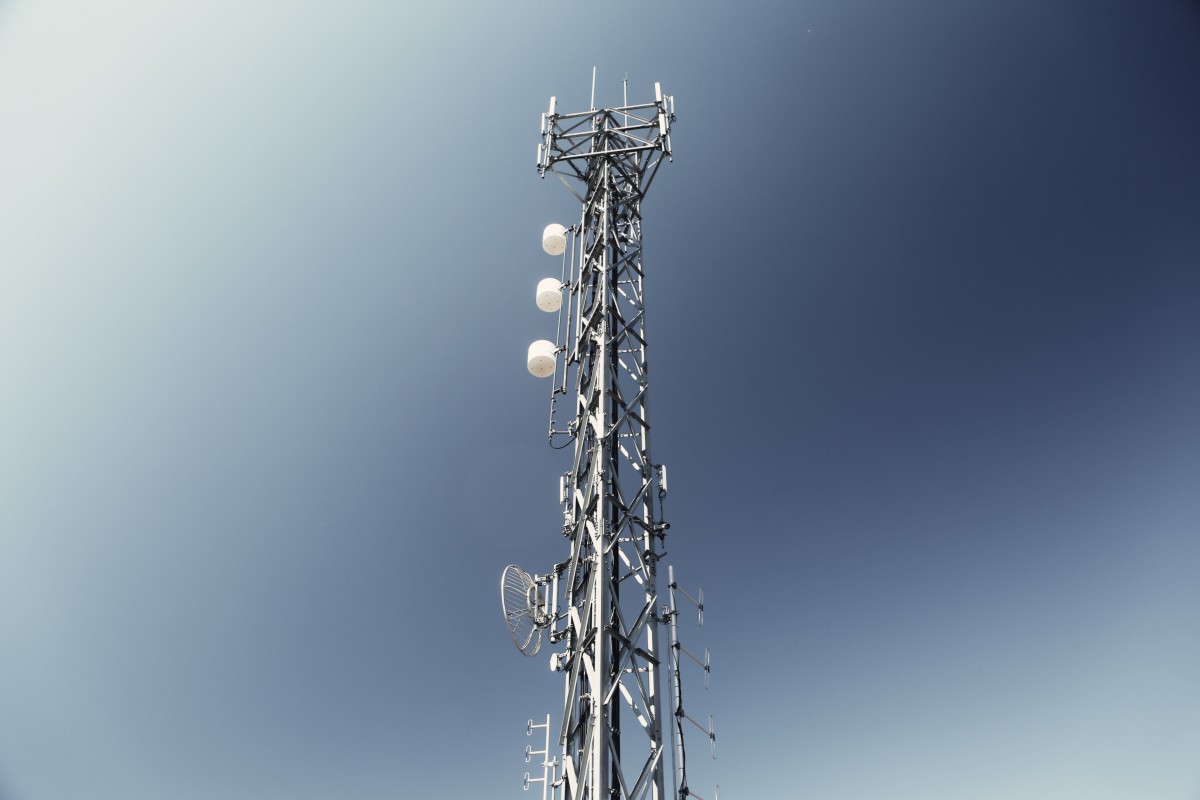
5G Cell Communication Towers – Everything You Need to Know
June 4, 2024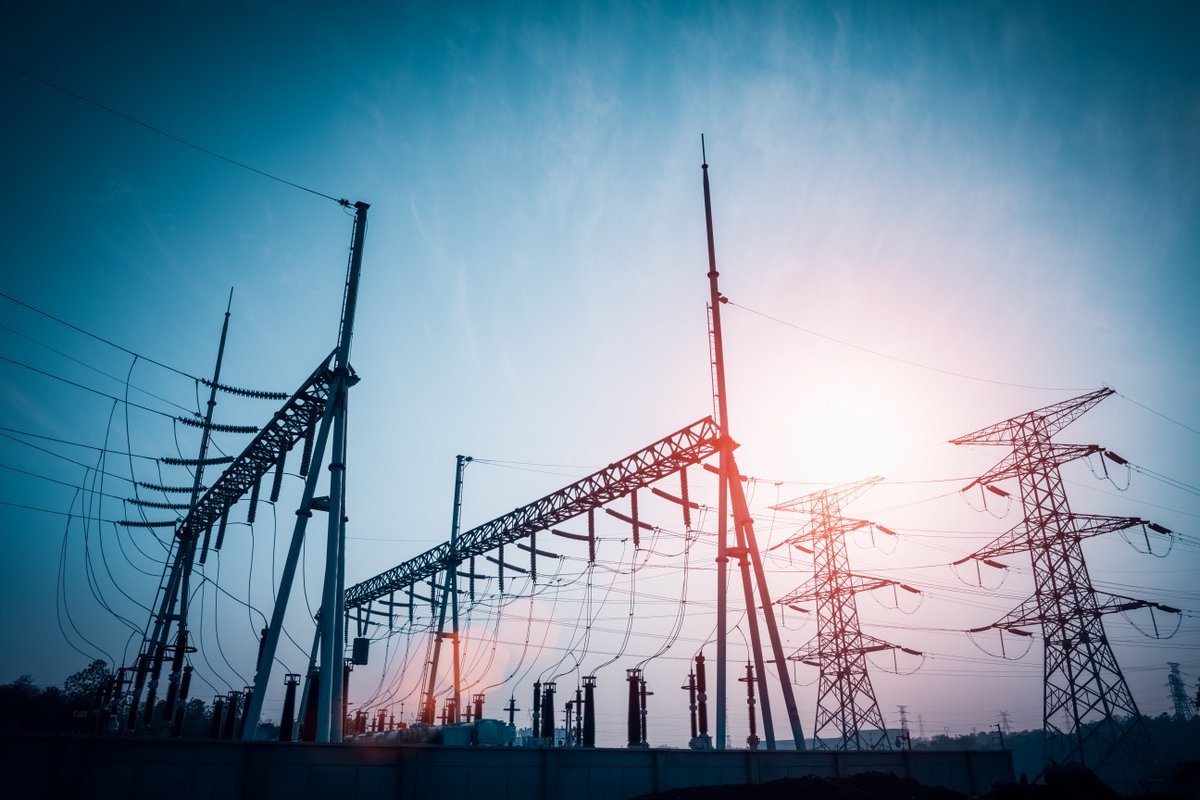
Analysis of Transmission Line Tower Subjected to Wind Loading
June 13, 2024Transmission line tower structural design Analysis
Analysis and application of key points in power steel tower structural design
The scope of power projects will be gradually broadened, and the design specification requirements for high-voltage transmission lines must be gradually improved. The requirements for the design specifications, preparation materials, and safety management of high-voltage transmission lines must be further refined to further refine the requirements for high-voltage transmission lines. In particular, it is necessary to enhance the safety of high-voltage transmission line tower systems and enhance the integrity of the transmission network. In addition, construction personnel must also clarify the design conditions of high-voltage transmission conductors in terms of thermodynamics, material consumption, lightning design, etc., to further improve the efficiency of transmission steel towers. Based on this, this paper conducts research on the design method of high-voltage transmission line structure. Keywords: high-voltage transmission lines; tower structure; design; power supply. Introduction: With the gradual increase of power supply capacity, the construction efficiency of the power transmission network must be improved. By determining the working conditions of the power supply and distribution network, adapting to the development characteristics of urban power consumption, and clarifying the conditions and requirements for balanced power consumption, it can promote rural, industrial production, The rapid development of the transportation industry. It can be seen that designers should clarify the design requirements and construction progress in advance, pay attention to the key aspects and key points of the design, and optimize the current transmission line tower structure according to the situation, and formulate scientific and reasonable design ideas and calculation methods to enhance the transmission line towerStructural safety.
1 Key points in structural design of high-voltage transmission line steel tower
1.1 Layout form The laying method of high-voltage transmission conductors mainly adopts the cross diagonal method. In addition, the cross diagonal materials can also be connected to the roots of the cross arms of the lines. At the same time, a small angle iron is laid out at all connection nodes to Increase the lateral and longitudinal load stiffness of the line tower structure, and promote the connection of the solid wooden boards on the same side of the line tower with its midpoint. After the basic layout process, construction personnel need to consider the longitudinal pressure of the line and apply a large amount of pressure to the line and the transmission line towerdiaphragm, which can reduce direct losses such as distortion and sinking of materials and plates. 1.2 Selection conditions The most important variables that affect high-voltage transmission line steel tower are the external load parameters and size parameters of the tower. Therefore, people are required to study the resistance moment of the inclined material to the external load, so as to estimate the relative angle between the inclined material and the horizontal plane of the load resistance moment. And determines the selection conditions of each node. 1.3 In the transmission line towerselection project of tower-type high-voltage transmission lines, engineers need to judge the working conditions of the transmission line towerunder high voltage, and judge the main technical indicators of the main structure, segment functionality and joints, and pass certain It is required to calculate the transmission line towertype and design characteristics of the transmission line towercomponents, and finally determine the comprehensive requirements of various elements, so as to achieve the main functionality of each unit in the high-voltage transmission line tower [1]. 1.4 Assessment Focus In order to enhance the practicality of the high-voltage transmission line tower, in addition, if the main material of the high-voltage transmission line tower adopts a single-angle steel structure, the construction personnel are required to use a double-row bolt model to enhance the stability of the high-voltage transmission line tower itself. sex, and utilizes a cross-section structure constructed of square steel to reduce the possibility of deformation of the gusset plate. 2 Application Principles of Transmission Technology High-voltage DC transmission projects already have the characteristics of large transmission capacity and good voltage standards, and have entered the ultra-high voltage area, which has brought great influence to the large-scale construction and safe and stable operation of the national power grid system. pressure, which puts forward high technical requirements for the safe and stable operation of the entire power supply system. The project construction clause is about the ultra-high voltage direct current transmission project, which is different from the main characteristics of the conventional high voltage direct current transmission project. 2.1 Reducing the cost of existing power grid resources is one of the issues that the power sector and the municipal industry need to consider, how to reduce production costs to the greatest extent and improve efficiency. At present, the biggest difficulty in power grid investment is the annual fee. The power supply project of the multi-circuit tower on the same tower must consume huge financial resources. Low-cost power projects should bring high economics and benefits, and should also be considered. Therefore, it is necessary to make full use of existing network resources to reduce production costs and improve efficiency. Increase road transportation functions and reduce production costs without increasing power consumption and normal production activities. 2.2 Urban Construction Planning The smooth and orderly development of urbanization construction and people’s daily life also means that the supply of resources is sufficient, and the integration and updating of resource networks cannot interfere with people’s normal work and daily life. However, with the rapid development of urbanization, power transmission costs must keep pace with the pace of urbanization development. Therefore, in cities with dense population and shortage of land funds, it is of great significance to build multiple minarets on one high tower [2]. 3. Thinking ways to optimize the transmission line towerstructure design With the progress of the times, the establishment of urban energy systems has attracted our attention. Therefore, a comprehensive study is being conducted on the current new energy network. The traditional power supply method can directly pass the electric energy from the inside of the transmission tower, and some transmission steel towers can also be set on multiple roofs. From the perspective of the circuit, the traditional engineering design idea is the engineering design idea of the transmission line. However, due to the rapid development of computer technology, some metal materials have the problem of being more perfect, more effective and safer than traditional metal materials. In addition, the biggest advantage of the new transmission line is that the engineering design is simple, scientific and reasonable, which not only reduces the safety risks caused by power transmission, but also improves the safety and accuracy of power transmission. In the entire tower construction process, because the route is clear and the difficult factors are reduced, the construction quality is improved and the safety is guaranteed. Now it is possible to use the network to charge. Although the network can improve the quality of power access, the infrastructure of power access still needs the support of the tower. Therefore, safety reasons, process reasons, material reasons, etc. should be fully considered in the design of the transmission line towerstructure. In addition, the setting of the transmission line toweralso needs to consider factors such as stability and impact resistance. In addition, since the design of the transmission line towerneeds to follow the corresponding physical principles and architectural principles, the preliminary design often requires field surveys, and the construction of the transmission line towercannot only emphasize its structural design, but also the reasonable selection of building materials. Design of the iron tower structure This article points out that the main way to control the tilting material of the transmission line towerbody is to consider and calculate the diameter of the inclined steel that can offset the torsional stress of the external load. Under these conditions, the load angle has a limit on the bending performance of the steel, that is, the angle between the steel and the inclined surface is limited by the strict requirements of the transmission line towerbody design. Some building materials need to be selected in the construction project, and a certain height between the horizontal plane and the transmission line towerbody needs to be checked. The network management range is usually below thirty degrees. The main shortcoming of this design is that only the horizontal leg constraint on one side is considered, and the overall protection function of the transmission line towerbody is not fully considered. Therefore, the following factors need to be fully considered when designing the transmission line towerbody: First, the structural form of the transmission line towerbody, on this basis, the selection conditions of building materials need to be fully considered, in addition to correctly designing the transmission line towerbody diameter, etc., and the structural strength of the transmission line towerbody needs to be understood. When designing and selecting the oblique material of the transmission line towerbody, whether to use double oblique material, or to use mono-oblique scattered cross-section material, or to use the properties of double oblique divided material scattered cross-section, or to use appropriate mono-oblique arranged material for K-shape, or mono-oblique crossed material, or appropriate reverse arranged material for K-shape, at the same time, what kind of design method should be selected, etc. Therefore, before making an appropriate decision, all these factors must be accurately calculated, which is conducive to the construction of the transmission line towertype [3].
4 Tower design
4.1 Tower load Tower action refers to the structure of a multi-circuit tower in the same tower, which includes external effects such as natural factors, human factors, and energy consumption. In the construction plan, the different natural conditions in the area where the transmission line toweris located in the past 50 years, as well as possible human factors, are fully considered. Under normal conditions, the service life of multiple transmission circuits on the same tower is at least 50 years. In the implementation of the project, the construction team also implemented it according to the corresponding technical conditions. 4.2 Daily operation In daily power generation work, under normal conditions, the following four items are mainly included: (1) wind speed; (2) temperature; (3) icing; (4) disconnection combination. 4.3 Disconnection The reasons for the disconnection of the transmission line can be divided into two categories: one is the disconnection of the ground tower crane line. When the ambient temperature is about -5 ℃ and the ground is frozen, if there is no wind, in the same input coil, there is no conductor when the line is disconnected, and the ground conductor is continuous, but when it is disconnected, there is no conductor and it cannot be damaged. Another tension tower is disconnected. The temperature is -5 ℃. There is neither ice nor wind. On one ground input conductor, all ground conductors are disconnected, or one by one. Therefore, for different towers, the disconnection time is also different. Each disconnection calculation combination is combined according to relevant regulations and specifications. 4.4 Uneven load Similarly, for these two towers, the suspension tower and the tension tower have different bearing capacities under the same conditions. According to the actual overhead situation, at -5℃, due to the uneven ice coverage, even if the strength is the same, the calculated values of ice coverage on both sides are different, so the maximum longitudinal unbalanced stress of the conductor of the first type of tower is 10%, while the maximum longitudinal unbalanced stress of the conductor of the second type of tower is 10%; when used on the same tower, the unbalanced tension is 30% of the tension during normal use. This means that the non-uniform load of the second type of tower is larger. Therefore, the unbalanced stress in the ground wire should be considered, that is, the maximum bearing capacity of the transmission line towerbody [4]. 4.5 There are two main factors in the load of the suspended pole tower construction. One is to increase the pressure on the pins, ground cables and corresponding buildings. Considering the dynamic load and use of various types of wire ropes, as well as the lifting function, the dynamic modulus considered during operation is only 1.1; secondly, the anchoring operation of various types of wire ropes. In engineering practice, the vertical force components of the anchor cable and the gravity and additional load through the ground line, that is, the vertical load of the suspension point, are summarized, while the longitudinal force of the wire rope, the ground stress and the anchor cable tension are the main values of the longitudinal unbalanced stress in the concrete. The layout of the tensile tower focuses on the layout of the pins, the ground wire load, the anchor head, the connecting wire and the tensile wire. It must be noted that if the conductor current balance value is consistent with the standard value, it is designed according to the standard of 30 kN, and the grounding optical fiber needs to meet the standard requirements of 5 kN. The angle of contact between the traction rope and the ground is generally less than 20°. After measuring the narrow voltage of the conductor, parameters such as the initial distance and conductor error, as well as the quality of the connecting wire must also be considered. In the construction of four-circle energy lines on the same tower, it is necessary to first set up the connecting cable (line) and then implement further construction processes.
5 mportant application measures for the structural design of high-voltage transmission line steel tower
5.1 Design of the root opening and tower body width of the transmission line towerDuring the evaluation of the root opening of the tower, the design staff should understand the different effects of the transmission line towerbody length and the relationship with the transmission line towerbody slope, and adjust the overall stiffness and tower weight indicators of the transmission line towerto clarify the design points of the tower, thereby reducing the unreasonable difficulties in the transmission line towerstructure design. Specifically, the following requirements should be emphasized: First, the transmission line towerbody slope is also related to the root opening of the tower. The smaller the transmission line towerbody slope, the smaller the transmission line towerbody slope, and the smaller the transmission line towerroot opening, so the transmission line towerarea is inversely proportional to the ground force on the transmission line towerbody. Second, the maximum slope requirement for the control tower body to the lower and upper outlet length is determined, the most basic consumables in the control tower are determined, the minimum consumables for controlling the entire building are determined, and attention is paid to the control of the lower and upper outlet electrical clearance coefficient. In this project, construction workers need to adjust the space in a timely manner to actively realize the integrity of the tower. For example, they need to fine-tune the upper opening width within a small range, adjust the lower opening width, and evaluate the slope of the entire tower and related design plans to ensure that the thickness, height, hardness and rigidity requirements of the iron column meet the design requirements. Third, the best upper and lower opening parameters must be measured to ensure that the value range of the double-side slope is below 0.13. In this project, construction workers must keep the main material slope of the transmission line towerbody within the range of 0.11~0.15. When the height of the transmission line towerexceeds the specified requirements, the slope of the transmission line towerbody will gradually increase, and the consumables of the transmission line towerwill also gradually increase. Based on this, construction workers need to set the functional structure of the transmission line towerbody in sections, and by adjusting the side slope requirements of the transmission line towerbody, the transmission line towerleg slope is relatively gentle to ensure that the strength and rigidity of the transmission line towerare within a certain range [5]. 5.2 Calculation of Interval Length The length of the steel interval is related to the load performance of the steel. Therefore, it is necessary to determine the diameter of the transmission line towerand make a judgment on the length of the steel interval in order to formulate the approximate size of the component diameter and judge the relationship between the transmission line towerweight and the application performance of the steel, and at the same time make the transmission line towerheight meet the relevant national regulations. Specifically, the following requirements should be emphasized: First, when designing the main structure of the tower, the construction personnel should try their best to highlight the bearing capacity of the structure itself, determine the angle coefficient between the diagonal material and the horizontal plane, and then calculate the size change of various materials. By judging the force characteristics of the main and diagonal materials, the basic force of various composite materials is analyzed, and relevant regulations such as the shape and thickness of the structure are formulated. Second, in the selection and design of the main structure of the building under pressure at the center, the staff must also evaluate the ratio between the eccentrically loaded diagonal material and the transmission line towersize. If the difference between the diagonal material and the transmission line toweris too large, the thickness of the diagonal material must also be evaluated. The technical conditions related to the transmission line towerstructure that affect the design of the building components can be understood to judge the effect of the external force load after the wind resistance is increased. In short, the engineering operator needs to first estimate the eccentric stress condition of the taper by the taper weight coefficient, and then select the more suitable steel material after repeated and multi-angle comparison to ensure that the slenderness ratio of the angle iron is about 40~50. 5.3 Design of tower body diagonal material layout The layout mode of the transmission line towerbody diagonal material can be divided into “inverted K type”, “cross type” and “positive K type” design methods. Therefore, if the taper method is used, the problem of uneven stress on the diagonal material can be alleviated. Therefore, the engineering designer must be familiar with the stress characteristics of the tension and compression device, and judge the support relationship between the tension rod and the compression rod. At the same time, pay attention to the management of the diagonal material quality, which can reduce the energy consumption in the transmission line towerdesign stage. It should be noted that the construction personnel should also add auxiliary structures in a timely manner, and re-evaluate the length ratio of the main structure on the basis of strengthening the safety of the transmission line towerbody, so as to ensure that the overall strength of the transmission line towerbody is within the appropriate index range, and reduce the unreasonable adverse interference of the structure such as slenderness ratio and support height [3]. In summary, engineering and technical personnel should examine the practicality of cross-slope materials, focus on meeting the performance of the beating, and evaluate the quantity indicators of the required diagonal materials to facilitate the selection of different diagonal materials. Conclusion At present, due to the rapid growth of social economy, electricity is more critical in people’s lives, and the construction of power infrastructure has become more critical at present. Many problems have not been overcome in the United States. It also accounts for a large proportion in various fields of engineering construction and has become the focus of my country’s construction of international railway corridors. The structural design of the transmission tower itself requires engineering and technical personnel to fully consider the special structural characteristics of the transmission line towerbody during engineering design, and adopt a high-quality and low-cost way to complete it, so as to ensure that the project does not waste resources and costs, but also guarantees the maximum load power consumption capacity, so that the overall structure of the transmission line becomes more scientific, reasonable and practical, so as to improve the structural design of the transmission tower and meet the basic energy construction requirements.
Related posts
The analysis of the bearing capacity of a power transmission line steel tower highlights the complexity and importance of structural and foundation design. By understanding the interplay of loads, material properties, and environmental factors, engineers can optimize tower performance and ensure reliability in power networks. Tables and case studies further illustrate best practices and design considerations.

